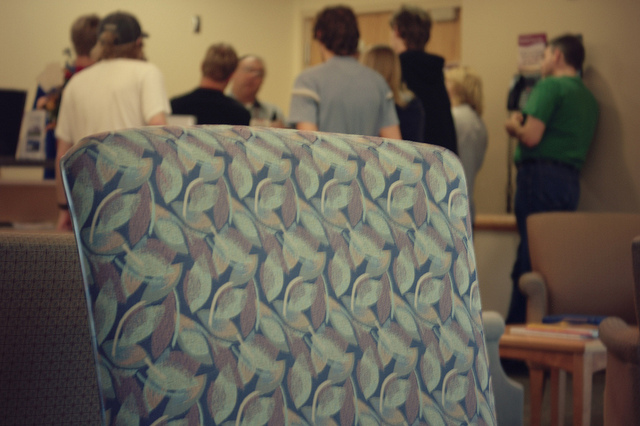Photo Credit: Tristan Bowersox
The passing of a loved one, the separation of a marriage or job loss will have a significant impact on those around you.
Sometimes, you are the one on the receiving end of bad news; other times, you have to be the one to deliver it.
Breaking bad news is a position we all dread.
Below is our description of the best way method of breaking bad news – for both you and the recipient.
Find a private place
One of the worst methods of breaking bad news is to blurt details out in a public space. Not only will this catch the recipient off guard, but also leave them vulnerable in front of prying eyes. Choose a private location for breaking bad news out of earshot where the person can sit down to cry, yell or ask questions without the fear of being overheard. Everybody reacts differently to bad news, and we all need the freedom to express our feelings as we endure them.
Give warning before breaking bad news
Before breaking bad news, make sure you give the recipient a few moments to prepare for what is to come by warning that what you have to say isn’t good. While nobody is truly ready to hear bad news, prefacing your conversation with the advice that “I have some bad news” or “You may need to sit down” will give the person a moment to mentally prepare for your conversation.
Note: Don’t drop this warning too soon. Telling someone that you have bad news hours before you see them in person will work the recipient into a fit of anxiety. A verbal warning a few moments before breaking bad news is the best strategy.
Speak plainly
When breaking bad news, don’t provide excessive details in a decorative narrative before getting to the point.
Speak plainly, give relevant details and be direct. The last thing you want to do is confuse the person receiving bad news or to give them false hope.
Avoid using text or email when breaking bad news
Without doubt, bad news is best delivered face-to-face. The recipient benefits from the human connection and contact that an in-person conversation provides. You will also need to hear the recipient’s voice and see their physical reaction in order to judge how to respond to their questions or offer your condolences in a respectful manner.
When a face-to-face conversation is not possible, your next best option for breaking bad news is to speak via phone call or Skype. This way, the person will still be able to hear your voice and connect to you on a human level.
By contrast, sending a text or email is an impersonal mode of communication that can leave the recipient feeling ostracised and alone. You also have no way of controlling the environment in which bad news sent by text or email is received, and may potentially place the recipient in a compromising situation.
A text message or email is also easy to fabricate – any person with your phone or internet password could theoretically send a false message from your account. The possibility that your message could have been a hack may cause the the person receiving bad news to hesitate to believe it, and cause them to feel panic while they seek confirmation.
Offer support
After breaking bad news, it is important to offer some understanding or support. Where appropriate, be a shoulder to cry on, give the recipient a hug, or simply assure them that if there is anything you can help with you are only a phone call away. You could also refer the recipient to counselling and crisis support services in your area to help them be proactive about coping with grief.
In times of crisis we all crave human connection. Giving immediate support when breaking bad news will help them to know that they are not alone.
The Clarity Road Team



